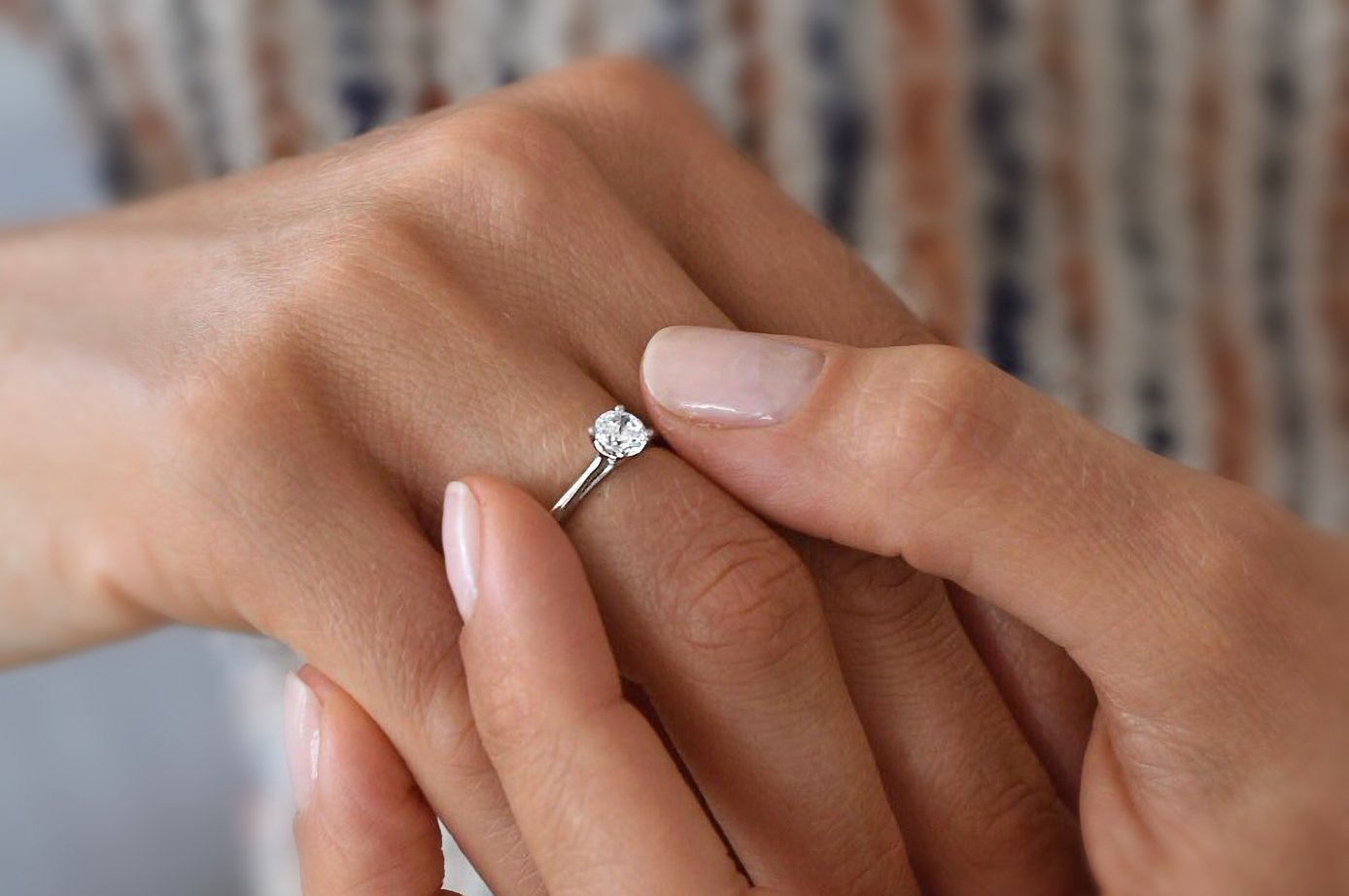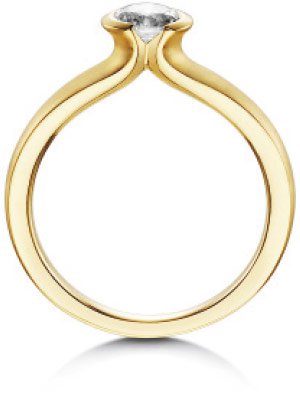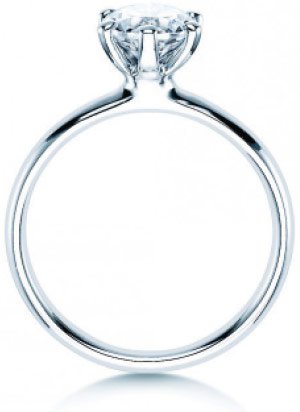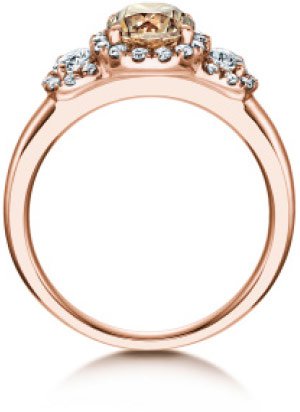

Do you know the most important criteria to determine the right material for engagement rings and the quality of precious metals? Now you can find out which is the right precious metal for engagement rings.

To make jewellery, goldsmiths use yellow gold alloys which resemble the colour of fine gold (99.9% pure gold) and consist of gold, silver and copper. The mixing ratio of the additional metals influence the final colour.
Yellow gold is known as luxurious and classic and is the most popular gold colour worldwide.

Gold alloys known as white gold are given a white tinted colour by the addition of other metals. Palladium, copper and silver are used as additional metals, only silver is used for low fine gold content.
White gold jewellery gets a coating of rhodium, a platinum metal. Rhodinising improves the colour to silvery white and protects the material against scratches.
Diamonds appear very impressive when set in white gold this is why white gold is often chosen for engagement rings. More than every third engagement ring is made of 14 or 18 carat white gold.

Rose gold (also: red gold) is a gold alloy of fine gold and copper. If the goldsmith adds small amounts of silver, rose gold is easier to process. The high copper content ensures the reddish colour and hardness of the material. Rose gold is the on-trend precious metal. More and more women are partial to the delicate colour, which flatters every skin type.
As we know from clothing, jewellery and engagement rings are subjected to trends that change over time. Cultural aspects also play an important role in the choice of material.
Today more than 40% of all engagement rings sold in Europe are made of white gold. This is remarkable, because the alloy of white gold is only about 100 years old. All bright precious metals (including silver, white gold and platinum) get over 80%.
Although yellow gold is regarded as the classic precious metal worldwide, it has lost much of its significance during the recent years among engagement ring buyers in Europe. In the 80s and 90s, around half of all engagement rings were made of yellow gold, whereas today it is only around five to seven percent.
In recent years, rose gold has developed into an on-trend precious metal. Until a few years ago, sales figures for rose gold engagement rings were still below one percent. This has changed since some celebrities, including Hollywood stars like Blake Lively, proudly presented their rose gold engagement rings to the world. Ever since, the demand has risen rapidly and is now at around ten percent.
Trends come and go. Timeless precious metals for engagement rings remain white gold and yellow gold. The number of white gold engagement rings sold will certainly increase in the coming years. We will also see more yellow gold engagement rings in the coming years.
Yellow gold is favoured by the trend towards the slip-ring, i.e. the engagement ring matching the wedding ring. And since over thirty percent of all wedding rings today are still made of yellow gold, there will probably be more demand for engagement rings made of this classic precious metal.
| 18 carat gold (18ct,750/-) contains: | |
|---|---|
| 75% pure gold (fine gold) | Additives |
| 14 carat gold (14ct, 585/-) contains: | |
|---|---|
| 58.5% pure gold | Additional metals |
| 8 carat gold (8ct, 333/-) contains: | |
|---|---|
| 33,3% gold | Additional metals |
Gold alloys make jewellery durable and resistant. Alloys consist of gold, silver and copper. Depending on the mixing ratio, colours can range from yellow gold to rose gold over to a silvery white tone. A rich gold tone can only be achieved with alloys that contain over 50% pure gold (fine gold).
Alloys with a fineness of around 14 carats (or around 58% pure gold) have the greatest possible strength and hardness. 8k, 14k and 18k are the most common alloys for jewellery.
By the way: allergy sufferers do not have to worry about a thing. Our white gold and yellow gold alloys do not contain nickel.
| Silver 925/- (Sterling silver) contains: | |
|---|---|
| 92,5% pure silver |
|
Silver 925/- the so-called sterling silver, contains 92,5% pure silver and 7,5% other metals, usually copper. The name relates to the British pound sterling, which was originally made from this silver alloy. Today sterling silver is used to make jewellery, coins, hats, cutlery and instruments. It is much harder and more scratch-resistant than pure silver, but high-quality silver jewellery also acquire a dark patina over time.
| Platinum 950/- contains: | |
|---|---|
| 95% pure platinum |
|
Apart from gold, platinum is currently one of the most expensive precious metals. This is in part due to its high net weight. It's extremely long durability, tarnish resistance and the rarity of the metal, make platinum ideal for the production of high-quality jewellery. Pure platinum is not a lot harder than gold. However, platinum alloys are much harder and consist of about 95% platinum and 5% cobalt.